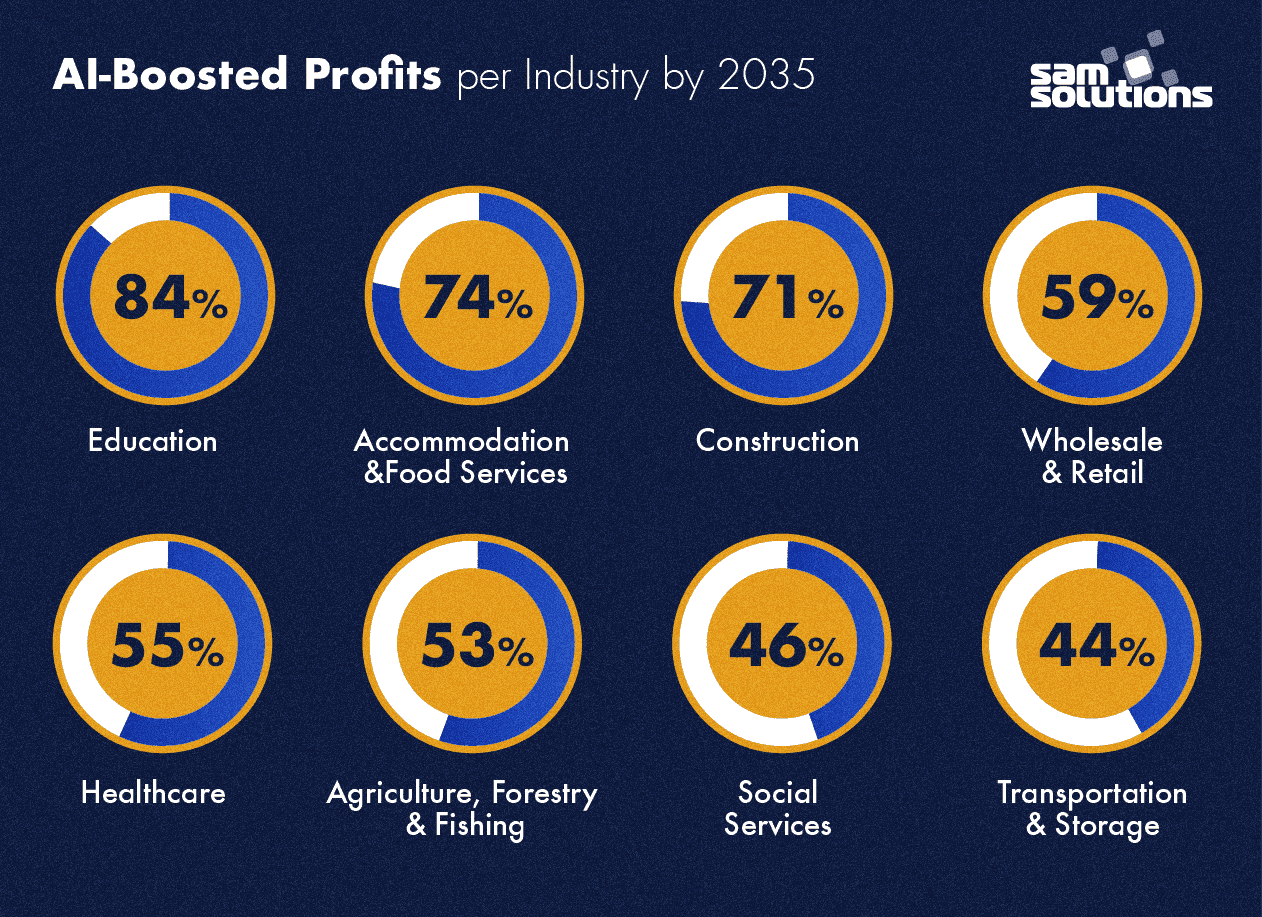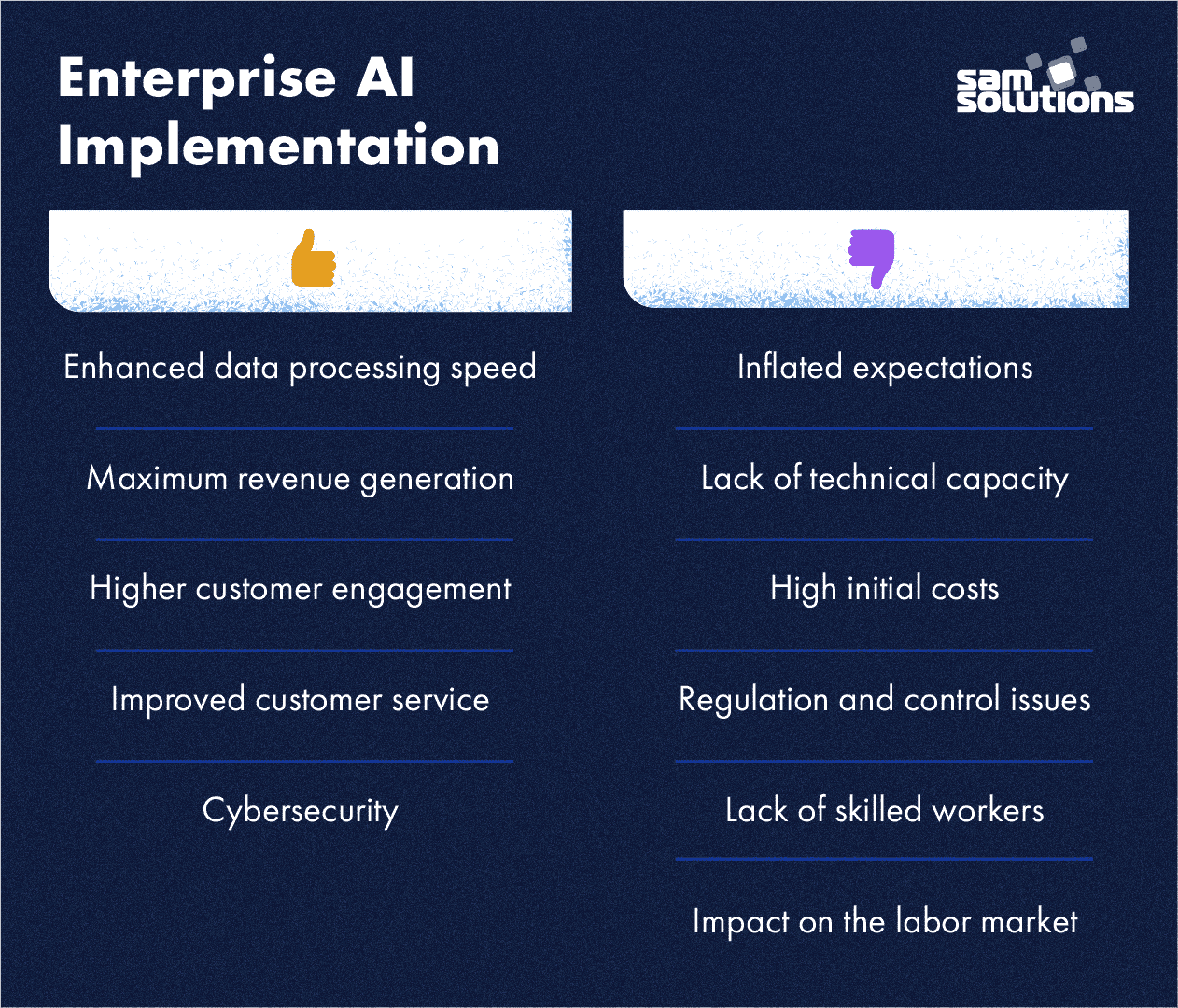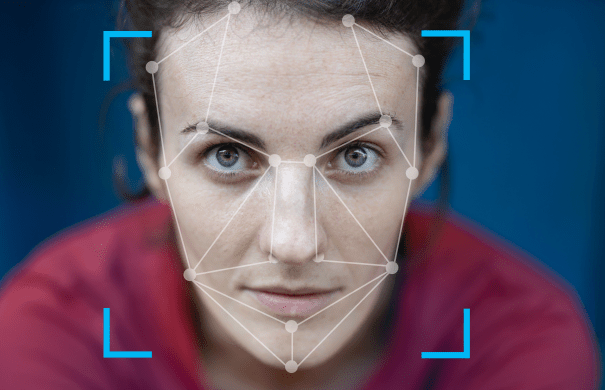Over the past ten years, artificial intelligence has transitioned from science fiction and people’s imagination into reality. People have got used to the presence of AI in their lives: internet search engines, online translators, chatbots, virtual voice assistants, GPS navigators — all these solutions are based on intelligent technologies.
Meanwhile, enterprise AI is maturing in various industries, from transportation and manufacturing to healthcare and customer service.
What Is Enterprise Artificial Intelligence?
The adoption of artificial intelligence by enterprises is scaling up due to overall industrial digitization. Cloud computing, Big Data, the Internet of Things and other emerging technologies are creating the perfect environment for AI expansion.
Enterprise AI is the type of software that leverages intelligent technologies to redefine the way companies in various industries collect and analyze data, communicate with customers and address issues.
There are still numerous misconceptions and myths about artificial intelligence because it is a complicated technology with great potential. People may think that enterprise AI solutions are just robots that imitate human behavior, but that’s not exactly true.
AI comprises a set of smart technologies that can learn, analyze, conclude, make decisions and solve problems, thus outperforming people in various tasks.
Some AI technologies are already mature and widely used; others are still emerging.

- Machine learning — a class of AI-based algorithms that can learn automatically from experience and don’t need to be explicitly programmed in order to improve. Machine learning platforms such as Google Cloud ML Engine provide APIs, development and training tools to create learning models and use them in machines and applications. Machine learning usually deals with classifications and predictions.
- Deep learning — ML-based algorithms that build many layers of artificial neural networks to sort and process information the way human brains do. Deep learning techniques lay the foundation for decision-making in autonomous robots.
- Natural language processing (NLP) — a branch of artificial intelligence that analyzes and structures human languages. It comprises the following:
- Speech recognition — technology that perceives oral speech and transforms it into a digital text format that is clear for computer applications. A speech recognition API is used in voice response systems and mobile apps.
- Natural language understanding (NLU) — technology that understands the meaning of textual data based on grammar and context analysis.
- Natural language generation (NLG) — the conversion of computer data into real narration. It is used for the automatic creation of written analytic reports, blog posts, or product descriptions.
- Computer vision — technology based on image and video analysis used to detect, identify and classify objects. Computer vision is widely used in real-time city monitoring through surveillance cameras to protect citizens from crime and accidents, inform about traffic and perform other essential social duties.
- Swarm intelligence — an emerging field inspired by the social behavior of insects and other creatures. It refers to a group of numerous autonomous devices that are governed by simple rules. In cooperation, they produce intelligent behavior to reach a common goal.
The Impact of Artificial Intelligence on Industries
Many experts believe that “great inventions” are a thing of the past. Still, artificial intelligence enterprise solutions can easily claim the title of a great invention. Many expect AI to become a production factor that will offer new sources of value and growth.
Accenture research into the use of AI in 16 industries found that AI could boost economic value by $14 trillion across these industries by 2035. The most significant impact will be on education, accommodation and food services, and construction.

As you see, some industries will experience a more significant AI impact than others. The reason is that AI boosts industry profits and innovations in three ways.
- Intelligent automation — implementing tools, techniques and strategies to automate processes and eliminate labor need.
- Labor and capital augmentation — implementing techniques that work alongside human workers, complement their work and improve their skills.
- Innovation diffusion — using AI innovations in one area to penetrate and influence other industries.
Thus, different industries have different potential to be affected by AI at the outset. For example, education, retail and financial services are labor-intensive sectors, so they will benefit from the additional workforce created by intelligent automation and labor augmentation.
For capital-intensive sectors such as transportation or manufacturing, AI will provide intelligent machines to eliminate faulty or useless equipment.
Practical AI Applications in Enterprises
Business leaders of large and small enterprises realize that artificial intelligence is likely to be a new engine for economic growth, and they can significantly benefit from adopting AI. Practical use cases emerge regularly and many enterprises are transforming.
Enterprise Decision Management (EDM)
The new approach to decision making, Enterprise Decision Management, is based on AI technologies and aims to automate data processing within organizations and make data-driven decisions.
Machine learning tools are applied to Big Data, as a human worker cannot process the huge amount of information in play today — from hundreds of connected devices, embedded sensors, customer interactions and other sources. AI systems can provide sound management and analysis of this data. It can also connect different sectors of infrastructure and allow them to share information and best practices.
For instance, e-Commerce stores utilize machine learning applications to anticipate customer wishes and needs by analyzing their previous inquiries and purchases. Based on the obtained knowledge, smart systems offer customers relevant and attractive goods or services, thus delivering a personalized experience, enhancing customer loyalty and driving sales.
AI algorithms are also of great help in healthcare: they analyze patients’ medical histories and help doctors establish diagnoses.
Predictive Maintenance
Manufacturing enterprises, to a great extent, depend on stable equipment operation. Predictive maintenance systems can ensure the needed stability by predicting failures.
A predictive maintenance system integrates IoT devices and sensors installed on machines with AI algorithms that analyze gathered information. It continuously monitors the conditions and performance of equipment and can predict when you should examine or repair particular parts.
AI in the enterprise helps manufacturers reduce or eliminate downtime and improve output.
Chatbots
Based on NLP technology, chatbots have revolutionized working processes in call centers, online stores and organizations that provide customer support. A chatbot is an irreplaceable tool for any organization that has thousands of clients. Chatbots offer various benefits to both businesses and customers: they process requests 24/7 and without delays; they eliminate queues to connect to an operator; one chatbot can replace many human operators, optimizing expenses.
Self-Driving Vehicles
Delivering parcels can now be contactless with the help of self-driving vehicles that use computer vision technology, GPS and IoT sensors to follow the exact route.
Autonomous vehicles are also widely used in large warehouses to categorize and place products on the shelves. This approach adds value to e-Commerce and retail enterprises.
The list of practical AI use cases is infinite and you can find AI-driven enterprises in other industries. The abovementioned applications of intelligent enterprise solutions prove their importance and efficiency for businesses.
Enterprise AI Benefits and Challenges
Any technological or industrial revolution brings together incredible opportunities and daunting challenges.

Benefits
The implementation of AI for enterprises has a range of benefits because cognitive technologies demonstrate a much higher performance level than human specialists.
- Enhanced data processing speed results from AI’s ability to quickly handle large amounts of data; this in turn leads to new business opportunities.
- Maximum revenue generation is expected due to optimized production, process automation and predictive maintenance.
- Higher customer engagement and satisfaction are achieved thanks to AI and ML algorithms’ ability to anticipate customer needs and provide personalized recommendations. Moreover, providers can run more effective sales and marketing campaigns.
- Chatbots and other intelligent assistants ensure improved customer service.
- Cybersecurity comes to a higher level with AI prevention technologies that can detect and defend against advanced cyberattacks.
Challenges
Implementing intelligent technologies offers as many AI benefits for businesses as it does challenges.
- Inflated expectations. AI is utilized in many industries but is not perfect yet. For example, voice recognition is at a high level, but there are still lots of problems with the transcription of dialects and slang. This means that machines can’t completely replace humans yet (fortunately), and you should set realistic expectations so as not to be disappointed.
- Lack of technical capacity. You can use deep learning algorithms for simple scenarios without having a vast computing infrastructure, and that will be okay. But if you want to train multilayer algorithms to perform complex tasks, you will need significant computing power and an advanced technology stack. Take this into account before implementing AI into production.
- High initial costs. It’s true that AI integration is supposed to increase revenues and reduce overall costs. But don’t forget that you will have to make a considerable investment to integrate algorithms into the existing system and develop and manage the code. So, the early days are likely to require much effort, skill and investment.
- Regulation and control issues. AI programs can sometimes act unpredictably, deviating from training and creating their own algorithms that operators can’t interpret. One vivid example is when two Facebook chatbots created their own language, though they were trained to use English. It can’t be affirmed that such deviations are dangerous, but the fact that people may lose control over machines is frightening.
- Lack of skilled workers. It may be quite a challenge to find enough employees skilled in a specific AI technique. That’s why a skills gap is a significant obstacle to AI adoption in enterprises.
- Impact on the labor market. Artificial intelligence is changing many aspects of our lives, including the labor market. Many people are afraid to lose their jobs; they think that business owners will replace human workers with more efficient intelligent machines. The question is ambiguous: some researchers are sure that AI adoption may create millions of new workplaces, as technologies need to be developed and maintained; at the same time, employees will have to obtain new knowledge, skills and training to adapt to the changing reality.
How to Prepare for an AI Future
AI software can’t solve all problems, but it can make interaction with clients more convenient, improve efficiency, and drive production through more accurate data analysis and automated processes.
To make AI’s impact on industry profit considerable, any company should develop the right plan for intelligent transformation. With the introduction of artificial intelligence into business processes, the main change will concern the way people and machines work together. Technology will rise to humans’ level and cooperate with people; the whole paradigm of working processes will change.
In this regard, businesses should follow three main steps to prepare for the AI future.
- Reorganize the HR branch — specialists should learn to interact with human employees and virtual workers, managing and coordinating their performance.
- Learn with machines — people should not stop learning; on the contrary, they should develop their thinking and creative capabilities to teach machines. Remember, programs act based on scenarios defined by people and are not capable of creating new cases themselves.
- Personalize services — AI offers a deeper understanding of customer needs, moving customer experience toward personalization. Create your business with a customer-centered idea, and you will enhance the effectiveness and quality of your product.
SaM Solutions supports common trends and utilizes AI techniques in various projects. Our expertise includes implementing intelligent system management and creating cognitive computing software with smart elements. Please contact our specialists if you have any questions.



















 The Latest 15 Information Technology Trends in 2024
The Latest 15 Information Technology Trends in 2024 Top 10 Embedded Software Development Tools
Top 10 Embedded Software Development Tools IaaS vs. PaaS vs. SaaS: What’s the Difference?
IaaS vs. PaaS vs. SaaS: What’s the Difference? 10 Examples of Predictive Analytics
10 Examples of Predictive Analytics











